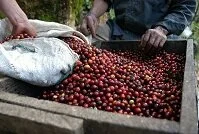Regional Variations, Specialties, & Unique Dishes
Empanadas: similar to tamales, but wrapped in dough rather than in a corn, rice, or potato encasing
Tamales: thick corn, rice, or potato casing enclosing meats, nuts, vegetables, and other seasonal foods; cooked in maxan leaves, banana leaves, or corn husks
Dining Etiquette
Dining with others in Guatemala is all about the socialization aspect of the event so be sure to bring conversation and a small appetite as meals may not begin for well over an hour. Generally, the Guatemalans arrive to events after the set meeting time and for meals, arriving 30 minutes late is not unusual.
Once everyone finally arrives drinks are usually served prior to eating. This generally begins with a toast of "salud" then followed by drinking and lively conversation. After drinking for some time the meal will begin. Be sure to let your host seat you and expect to be separated from your significant other if eating together; this encourages meeting new people and greater socialization. Generally the men and women will eat on opposite sides of the table and this sexual division continues in other ways as well as men are expected to stand when women enter the room.
With the arrival of the food, you may be asked to join in a short prayer if dining in a local's home; after this the host will generally invite everyone to begin eating with the words "buen provecho." Although the Guatemalans are fairly forgiving in your dining habits, they do expect you to keep your hands in sight by resting your wrists on the table and you should eat in the continental style (fork in the left hand and knife in the right). In some cases you may eat with your hands, generally when tortillas are involved; break off enough of your tortilla to take as a single bite, then scope some food and eat it. If in doubt, follow the lead of the locals.
As you finish eating, eat everything from your plate. If at a local's house, asking for additional food is a great compliment so try to take small portions at first. After you can take no more food, eat all the food then place the knife and fork together on the right side of the plate.
If dining at a restaurant, summon the server by making eye contact (don't wave or call his/her name). The inviter generally pays for everyone and a tip of up to 10% is appreciated. In more rural areas tips are not expected at all, but rounding up is still a required gesture.
Celebrations & Events
There are a number of foods associated with holidays and celebrations in Guatemala, including most of the country's religious holidays. All Saint's Day (November 1) which is filled with homemade candies and snacks often decorated to look like skeletons and skulls; a meat salad dish called fiambre is also common on this day. On Easter, cod and numerous Spanish seafood dishes are traditionally served while other religious holidays are generally celebrated with tamales, including Christmas (December 25) and the Three Kings Day (January 6).
Tamales are popular at other celebratory events as well, including birthdays, anniversaries, and other gatherings as this food is most closely associated with being a celebratory food.
Drinks

Coffee beans
Nearly every international beverage is available in Guatemala, but the local favorites are coffee and fruit drinks. Most of the coffee is locally grown and is typically served with milk and sugar. Among the many fruit drinks, licuados is the most common, which is essentially a fruit smoothie.
Guatemala's favored alcoholic beverage is beer and the locally brewed "Gallo," "Dorada," and "Moza" are among the most popular of these beers. Among the local liquors, "Quetzalteca" is a sugarcane liquor that is best mixed with juice, but is also served as a shot. Numerous other hard liquors and wines are common, but not too popular; rum is perhaps the most common hard liquor with both "Ron Zacapa Centenario" and "Zaya Gran Reserva" being the most popular local varieties.
The tap water in Guatemala should not be consumed. Be sure to also avoid anything with ice as it may have been made from the tap water. Salads and fruits could have also been washed in the tap water so be careful with those foods as well.